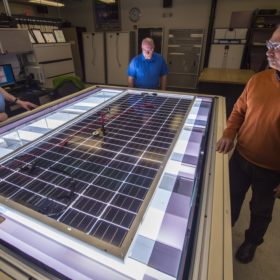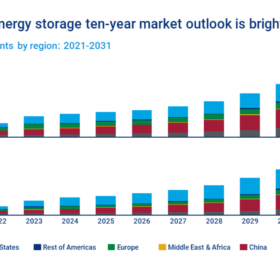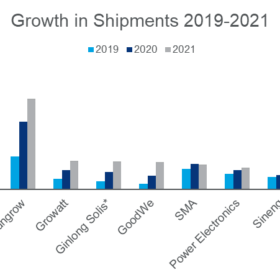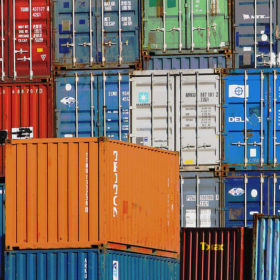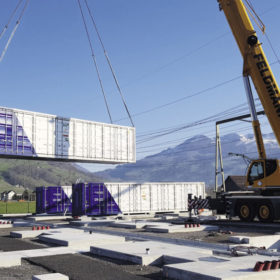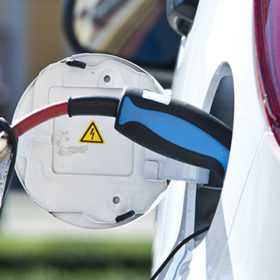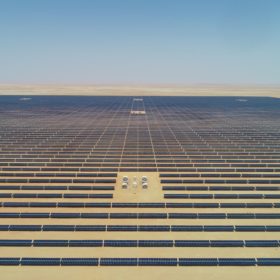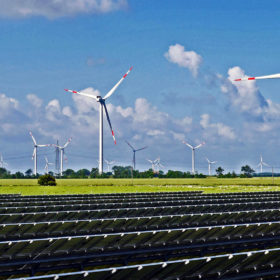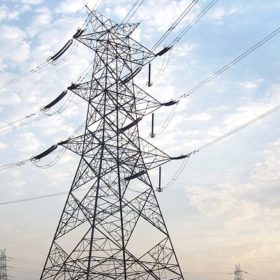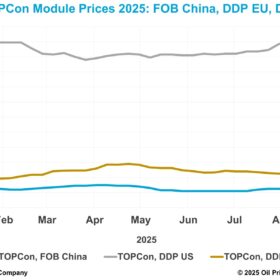Monitoring degradation for 13 module types
In a study that began in 2016, US scientists purchased 834 PV modules, representing seven manufacturers and 13 module types, and installed them in various climate conditions to observe their performance over time. The results show that, while plenty of opportunities still exist to extend module lifetimes and reduce performance loss in the field, reductions in the manufacturing cost of PV have not come with an increase in their degradation rate.
Global energy storage deployment may hit 500 GW by 2031
Wood Mackenzie said it expects the United States and China to represent 75% of global energy storage demand in a highly consolidated market.
Huawei tops inverter supply rankings for 2021
China’s Huawei has been named the world’s biggest inverter supplier for the seventh year in a row, followed by Sungrow and Growatt, according to Wood Mackenzie.
Analyst predicts extent of rise in this year’s solar capital costs
Wood Mackenzie this week made a slew of predictions for the industry in 2022 and noted the effects the US’ recently announced anti-circumvention investigation is already having on utility scale plans.
Battery supply could remain tight into next year
Analyst Wood Mackenzie has predicted soaring demand for electric vehicle devices will ensure supply will not keep pace with demand until some point in 2023.
Asia Pacific solar supply chain trouble to ease this year, according to analyst
Wood Mackenzie has predicted solar equipment cost increases will ease back after last year saw the average cost of solar electricity rise for the first time in the Asia-Pacific region.
Analyst predicts 2030 bidding war for dead EV batteries
A lack of end-of-life batteries this decade is likely to play into the hands of Chinese recyclers located near most of the world’s production facilities, according to analyst WoodMac, but might at least help rebalance the current situation in which new products are cheaper than recycled ones.
Automation in solar O&M delivering plant ROI
Data analytics and digital process support in solar plant operation and maintenance delivers unmatched improvement in efficiency, while modern technology drives down development costs. It also helps service providers in ensuring sustained energy generation, long-term performance, and plant’s return on investment.
WoodMac predicts 30% drop in Asia-Pacific front-of-meter battery costs by 2025
A new Wood Mackenzie report suggests that costs for front-of-the-meter battery storage systems in the Asia-Pacific region could fall by 30% by 2025. The declining costs are already having a palpable impact, as 2021 has opened with a slew of large-scale battery project announcements.
WoodMac says renewable electricity generation in India could be 56% cheaper than coal-fired by 2030
The analyst said currently, India and Australia are the only Asia Pacific countries where renewable power already costs lower than new-build coal. It predicted the trend would spread to the entire region by the end of the decade, while India and Australia would see renewables becoming further cheaper than coal.
